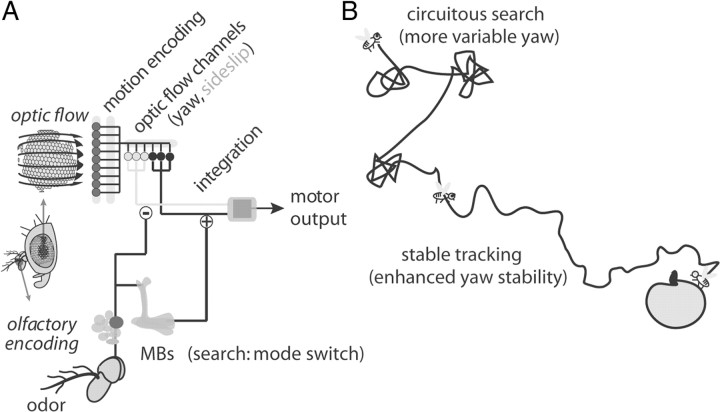Figure 8.
A hypothesized circuit for olfactory modification of the optomotor reflex. A, We posit that yaw and sideslip optomotor responses rely on different networks of electrically coupled LPTCs, or at least functionally separated parallel visual–motor control channels. Olfactory cues influence the two optomotor channels disparately, increasing gain in the yaw motor transformation and reducing gain in sideslip. Furthermore, HU ablation defines the olfactory circuit responsible for olfaction-dependent optomotor modification, suggesting the involvement of the MBs. B, Olfactory information acts as a switch between a search state that allows greater flexibility in the yaw optomotor channel and tracking state that requires greater yaw fidelity to track odor plumes.

